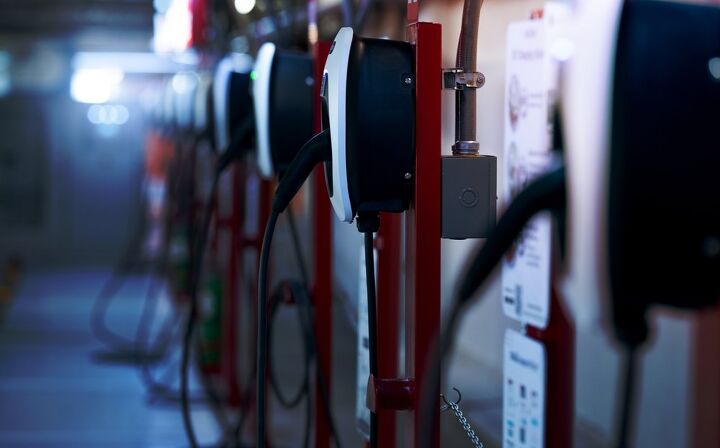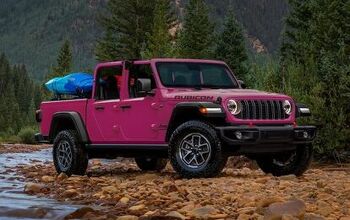Retail Giants Step Up: Costco, Ikea, Target, and Walmart Join the EV Charging Movement
A recent study by Consumer Reports sheds light on the current landscape of electric vehicle (EV) charging stations in the United States, focusing on the role of retailers. The research, which examined over 270,000 store locations across various retail categories, reveals a vast potential for growth in EV infrastructure through retail participation. Despite the low presence of EV charging facilities at retail locations, there are substantial benefits and federal incentives available for retailers willing to invest in this area.
Retailers and EV Charging Availability
The analysis encompassed a broad range of retail categories, including big box stores, grocery stores, drugstores, department stores, convenience stores, and discount stores. Findings indicate that EV charging stations are notably scarce across all retail types, with an average availability ranging from one in every 14 big box store locations to one in every 40 department stores. This scarcity highlights a significant gap in the current EV infrastructure and the opportunity for retailers to become more involved.
Benefits of EV Charging for Retailers
The addition of EV charging stations not only serves the growing number of EV drivers but also offers several advantages for retailers. Data suggests that installing EV chargers can increase store foot traffic by an average of 4 percent and revenue by 5 percent. Moreover, the majority of retail locations in the U.S. qualify for federal benefits that cover 30 percent (up to $100,000) of the installation costs, making it a financially viable initiative for many businesses.
The Triple Bottom Line
Installing EV chargers aligns with the concept of the triple bottom line, benefiting people, the planet, and profits. Retailers can attract more customers, enhance their brand image, and take advantage of federal incentives. Additionally, the strategic placement of charging stations can make sustainable transportation options more accessible to all communities, emphasizing the importance of equity in these efforts.
Consumer Interest and Retailer Commitment
The study also includes survey data revealing that many Americans are considering EVs, but the lack of convenient charging options poses a significant barrier. While some retailers like IKEA have made notable progress by offering EV charging at nearly all of their U.S. locations, others lag far behind, with no leading fast-food chains providing significant EV charging facilities.
Recommendations for Retailers
To address the growing need for EV infrastructure, Consumer Reports urges retailers to:
- Establish and adhere to specific timelines for EV charger installation.
- Consider equity in site selection to ensure accessibility in underserved communities.
- Educate both customers and employees about EV charging.
- Maintain transparency regarding charging locations and services.
- Ensure the durability and reliability of charging stations through proper maintenance.
Conclusion
Retailers possess a unique opportunity to play a crucial role in expanding the EV charging network across the United States. By investing in EV infrastructure, retailers can not only contribute to the environmental cause but also derive economic benefits through increased customer engagement. The encouragement of federal incentives further supports this initiative, offering a strategic avenue for businesses to partake in the clean transportation future.
This article was co-written using AI and was then heavily edited and optimized by our editorial team.
More by TTAC Staff
Latest Car Reviews
Read moreLatest Product Reviews
Read moreRecent Comments
- Bd2 Lexus is just a higher trim package Toyota. ^^
- Tassos ONLY consider CIvics or Corollas, in their segment. NO DAMNED Hyundais, Kias, Nissans or esp Mitsus. Not even a Pretend-BMW Mazda. They may look cute but they SUCK.I always recommend Corollas to friends of mine who are not auto enthusiasts, even tho I never owed one, and owned a Civic Hatch 5 speed 1992 for 25 years. MANY follow my advice and are VERY happy. ALmost all are women.friends who believe they are auto enthusiasts would not listen to me anyway, and would never buy a Toyota. They are damned fools, on both counts.
- Tassos since Oct 2016 I drive a 2007 E320 Bluetec and since April 2017 also a 2008 E320 Bluetec.Now I am in my summer palace deep in the Eurozone until end October and drive the 2008.Changing the considerable oils (10 quarts synthetic) twice cost me 80 and 70 euros. Same changes in the US on the 2007 cost me $219 at the dealers and $120 at Firestone.Changing the air filter cost 30 Euros, with labor, and there are two such filters (engine and cabin), and changing the fuel filter only 50 euros, while in the US they asked for... $400. You can safely bet I declined and told them what to do with their gold-plated filter. And when I changed it in Europe, I looked at the old one and it was clean as a whistle.A set of Continentals tires, installed etc, 300 EurosI can't remember anything else for the 2008. For the 2007, a brand new set of manual rec'd tires at Discount Tire with free rotations for life used up the $500 allowance the dealer gave me when I bought it (tires only had 5000 miles left on them then)So, as you can see, I spent less than even if I owned a Lexus instead, and probably less than all these poor devils here that brag about their alleged low cost Datsun-Mitsus and Hyundai-Kias.And that's THETRUTHABOUTCARS. My Cars,
- NJRide These are the Q1 Luxury division salesAudi 44,226Acura 30,373BMW 84,475Genesis 14,777Mercedes 66,000Lexus 78,471Infiniti 13,904Volvo 30,000*Tesla (maybe not luxury but relevant): 125,000?Lincoln 24,894Cadillac 35,451So Cadillac is now stuck as a second-tier player with names like Volvo. Even German 3rd wheel Audi is outselling them. Where to gain sales?Surprisingly a decline of Tesla could boost Cadillac EVs. Tesla sort of is now in the old Buick-Mercury upper middle of the market. If lets say the market stays the same, but another 15-20% leave Tesla I could see some going for a Caddy EV or hybrid, but is the division ready to meet them?In terms of the mainstream luxury brands, Lexus is probably a better benchmark than BMW. Lexus is basically doing a modern interpretation of what Cadillac/upscale Olds/Buick used to completely dominate. But Lexus' only downfall is the lack of emotion, something Cadillac at least used to be good at. The Escalade still has far more styling and brand ID than most of Lexus. So match Lexus' quality but out-do them on comfort and styling. Yes a lot of Lexus buyers may be Toyota or import loyal but there are a lot who are former GM buyers who would "come home" for a better product.In fact, that by and large is the Big 3's problem. In the 80s and 90s they would try to win back "import intenders" and this at least slowed the market share erosion. I feel like around 2000 they gave this up and resorted to a ton of gimmicks before the bankruptcies. So they have dropped from 66% to 37% of the market in a quarter century. Sure they have scaled down their presence and for the last 14 years preserved profit. But in the largest, most prosperous market in the world they are not leading. I mean who would think the Koreans could take almost 10% of the market? But they did because they built and structured products people wanted. (I also think the excess reliance on overseas assembly by the Big 3 hurts them vs more import brands building in US). But the domestics should really be at 60% of their home market and the fact that they are not speaks volumes. Cadillac should not be losing 2-1 to Lexus and BMW.
- Tassos Not my favorite Eldorados. Too much cowbell (fins), the gauges look poor for such an expensive car, the interior has too many shiny bits but does not scream "flagship luxury", and the white on red leather or whatever is rather loud for this car, while it might work in a Corvette. But do not despair, a couple more years and the exterior designs (at least) will sober up, the cowbells will be more discreet and the long, low and wide 60s designs are not far away. If only the interiors would be fit for the price point, and especially a few acres of real wood that also looked real.


































Comments
Join the conversation